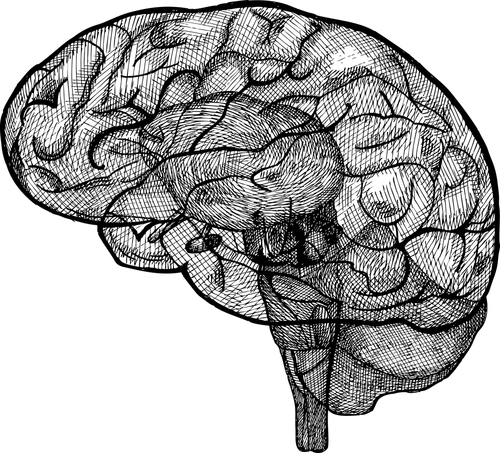Alzheimer’s Disease Culture System Confirms Landmark Hypothesis

 A pioneering in vitro culture model of Alzheimer’s disease was established for the first time by researchers from the Genetics and Aging Research Unit at Massachusetts General Hospital (MGH), entitled “A three-dimensional human neural cell culture model of Alzheimer’s disease.” The study, which was recently published in the Nature journal, by Se Hoon Choi, PhD, and Young Hye Kim of the MGH Genetics and Aging Research Unit, co-lead authors of the work, will enable researchers to recapitulate all the pathological processes and identify key players that contribute to the development of Alzheimer’s disease.
A pioneering in vitro culture model of Alzheimer’s disease was established for the first time by researchers from the Genetics and Aging Research Unit at Massachusetts General Hospital (MGH), entitled “A three-dimensional human neural cell culture model of Alzheimer’s disease.” The study, which was recently published in the Nature journal, by Se Hoon Choi, PhD, and Young Hye Kim of the MGH Genetics and Aging Research Unit, co-lead authors of the work, will enable researchers to recapitulate all the pathological processes and identify key players that contribute to the development of Alzheimer’s disease.
Alzheimer’s disease is the most frequent form of dementia, characterized by two important pathological features: amyloid-β plaques and neurofibrillary tangles. The amyloid hypothesis of Alzheimer’s disease posits that the excessive accumulation of amyloid-β peptide leads to neurofibrillary tangles composed of aggregated tau hyperphosphorylated. However, until now, there were no disease models that had linked these two sequential pathological processes. The mouse models with familial Alzheimer’s disease (FAD) mutations show amyloid-β-induced synaptic and memory deficits, but do not fully recapitulate some other crucial pathological processes of Alzheimer’s disease, such as distinct neurofibrillary tangle. Other models can lead to the production of tangles but not plaques. On the other hand, in vitro models, like human neurons derived from Alzheimer’s disease patients cultures, exhibit increased levels of the toxic form of amyloid found in plaques and the abnormal version of the tau protein that makes up tangles, but did not form amyloid-β plaques or neurofibrillary tangles.
“Originally put forth in the mid-1980s, the amyloid hypothesis maintained that beta-amyloid deposits in the brain set off all subsequent events — the neurofibrillary tangles that choke the insides of neurons, neuronal cell death, and inflammation leading to a vicious cycle of massive cell death,” said Rudolph Tanzi, PhD, director of the MGH Genetics and Aging Research Unit and co-senior author of the report, in a press release.
“One of the biggest questions since then has been whether beta-amyloid actually triggers the formation of the tangles that kill neurons. In this new system that we call ‘Alzheimer’s-in-a-dish,’ we’ve been able to show for the first time that amyloid deposition is sufficient to lead to tangles and subsequent cell death,” added Dr. Tanzi.
Dr. Doo Yeon Kim, co-senior author of the study, stated that the medium usually used to grow cultured cells, i.e. liquid two-dimensional systems, inadequately mimicked the gelatinous three-dimensional environment that exists inside the brain. Therefore, the MGH research team decided to use a gel-based, three-dimensional culture system to grow human neural stem cells that carried variants in two genes — the amyloid precursor protein and presenilin 1 – known to cause early-onset familial Alzheimer’s disease (FAD). These two genes were co-discovered in Dr. Tanzi’s laboratory. After growing for six weeks, the FAD-variant cells were found to have significant increases in both the typical form of beta-amyloid and the toxic form associated with Alzheimer’s. The variant cells also contained the neurofibrillary tangles that block the inside of nerve cells causing cell death. These blocking steps are known to be essential for the formation of amyloid plaques also prevented the formation of the tangles, confirming amyloid’s role in initiating the process. The tau in tangles is characterized by the presence of excess phosphate molecules. The researchers found that this process could be blocked by inhibiting the action of an enzyme called GSK3-beta – known as phosphorylate tau in human neurons — which prevented the formation of tau aggregates and tangles even in the presence of abundant beta-amyloid and amyloid plaques. The inhibitin of this enzyme could be a potential therapeutic target to prevent the development of Alzheimer’s disease.
“This new system — which can be adapted to other neurodegenerative disorders — should revolutionize drug discovery in terms of speed, costs and physiologic relevance to disease,” said Dr. Tanzi.
“Testing drugs in mouse models that typically have brain deposits of either plaques or tangles, but not both, takes more than a year and is very costly. With our three-dimensional model that recapitulates both plaques and tangles, we now can screen hundreds of thousands of drugs in a matter of months without using animals in a system that is considerably more relevant to the events occurring in the brains of Alzheimer’s patients,” concluded Dr. Tanzi.






